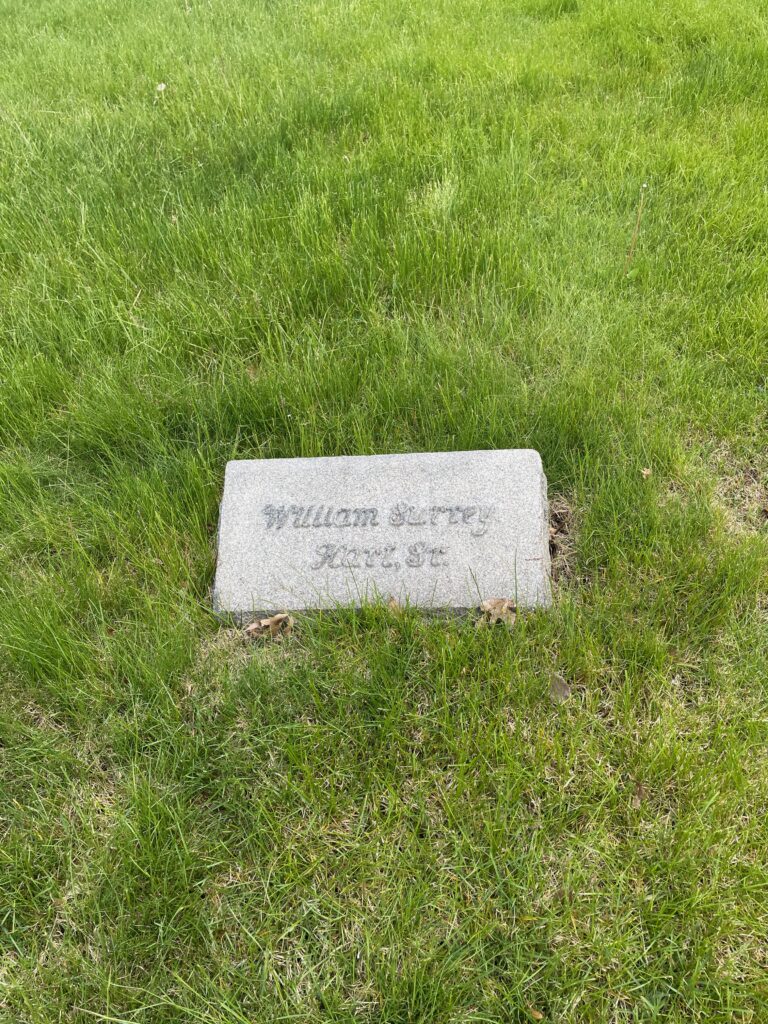Erik Visits an American Grave, Part 1,451
This is the grave of William S. Hart.

Born in 1864 in Newburgh, New York, Hart started working in acting in New York City in the late 1880s. The first couple of decades of his career were relatively unremarkable. He had a certain amount of success, even did some Shakespearean work, and was a theater director in the resort town of Asheville, North Carolina for awhile. But the world of acting was pretty ephemeral and he certainly wasn’t the star he wanted to be. I am sure there was a market in Asheville, but still, it’s western North Carolina. He seems to have largely supported his mother and sisters too.
But the movies, now they were kind to Hart. He already had gotten into westerns, which had entered their heyday at the peak of entertainment by 1900. His first westerns were in 1914. He was already 50 years old, which is quite aged to become a movie hero. But that is what happened. He had a lot of experience as a director of course and the film industry in the 1910s was still very chaotic and it wasn’t that hard for someone who actually knew what they were doing to rise pretty fast. That was the case for Hart, who was directing his own westerns by 1915. Hart was a committed real artist and wanted to bring realism into the genre. This is part of what makes him so great–his films really remain highly watchable today, at least the best ones. He immediately vaulted into the top of the film industry, including the box office.
Hart then just leaned into the western big time. I’m not really sure if he had significant interest in the genre before he started starring in them, but soon, he was using his new riches to buy western memorabilia, including Billy the Kid’s guns. A lot of the old west guys were in Hollywood and Hart started hanging out with people such as Wyatt Earp and Bat Masterson. By 1917, Adolph Zukor gave him a sweet contract that just made him an even bigger star.
My favorite Hart film is probably the first great western, in my view. Hell’s Hinges was a 1916 film. He played the lead role, a gunslinging cowboy who is part of a ruthless gang. A new preacher comes to town. The guy is a complete fraud and everyone knows it. But Hart falls for his righteous sister. He changes his ways. The gang gets the preacher drunk to burn down the church. And Hart, well, let’s just say Hart has his revenge. The plot sounds like a million other westerns and perhaps High Plains Drifter comes to mind. They are cousins of a sort. But this is sort of the first anti-western. No John Wayne character here. This is just pretty well brutal. The West isn’t some sort of lark here. It’s for tough men, yes. But the other tough men are really bad guys and the good guys are kind of bad too. Hart himself, yeah, he’s all of those things, but of course has a good heart and is forthright and honest always. The near-apocalyptic ending of this is really great. Love this film a lot.
Unfortunately, Hart also was a pretty big blowhard. He was a big supporter of the nation’s effort in World War I, which OK, whatever. But even though he had never even met Fatty Arbuckle, after the comedian was accused of rape, Hart spoke out repeatedly that he was guilty. It was really bad. Buster Keaton was so disgusted that he worked up a parody of Hart as a bully and a fool in The Frozen North, from 1922. By then, the style of westerns was changing. The genre was moving away from realism and toward silliness. Hart did a last film, 1925’s Tumbleweeds. It was well received but when United Artists didn’t really promote it, Hart sued and this took up the next 15 years of his life, winning a settlement in 1940. He wrote a few books of western stories during these years as well, though they were self-published and I don’t think did much.
Hart had a weird social life too, He was very, very close to his sister. He didn’t marry until he was 57. His new wife, an actress, was 22. He made her stop acting upon their marriage. The marriage lasted five years, until his wife filed for divorce, and when it all fell apart, she claimed Hart would not only not be intimate with her, but that their bedroom had to be open for his sister to see at all times. Hart agreed to the divorce and to a $100,000 settlement, but only if she never acted again. This seems to have really mattered to him. They did have a son as well and Hart agreed to a $100,000 trust fund for him.
Still, Hart had a lot of money and lived in a fancy house outside of Los Angeles. He even did a spoken prologue for a re-release of Tumbleweeds, his only sound film appearance. He died in 1946, at the age of 81. He refused to leave any of his riches for his now grown soon, figuring the trust fund was enough.
Let’s watch some of Hart’s work:
William S. Hart is buried in Green-Wood Cemetery, Brooklyn, New York.
If you would like this series to visit other western stars, you can donate to cover the required expenses here. Tom Mix is in Glendale, California and John Wayne is in Corona del Mar, California. Previous posts in this series are archived here and here.


